Categories
Archives
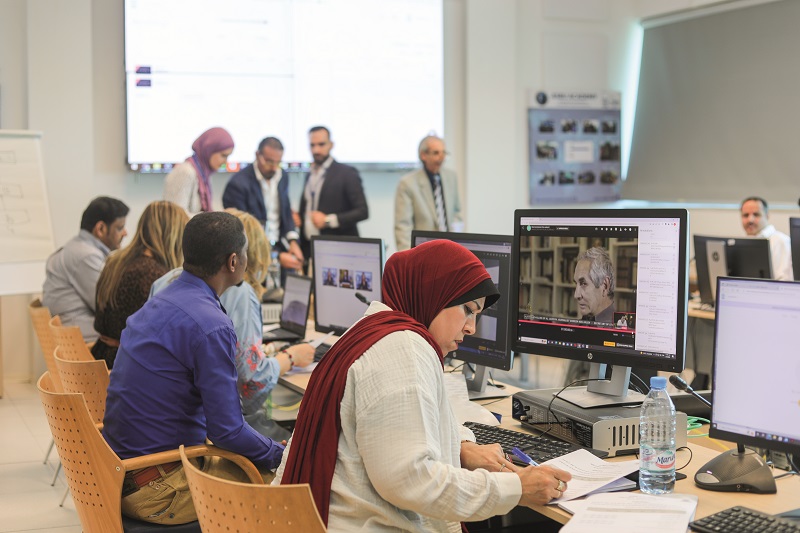
This weekend at the IBC broadcast industry event in Amsterdam, the Arab States Broadcasting Union (ASBU) will launch its news exchange network, ASBU Cloud, with IPTC’s NewsML-G2 standard at its core.
Developed for ASBU by IPTC member Broadcast Solutions, a systems integrator in the broadcast industry, ASBU Cloud uses NewsML-G2 to distribute content to partners.
After evaluating several metadata formats, ASBU chose to implement NewsML-G2 as a metadata schema and worked with IPTC to implement the standard. This ensures that ASBU content can be used easily by other international organisations like the European Broadcasting Union (EBU) and Asia-Pacific Broadcasting Union (ABU).
Broadcast Solutions System Architect Jean-Christophe Liechti explained the use of NewsML-G2 in an interview with Broadcast Pro magazine: “This XML-based standard for news exchange was developed and is maintained by the International Press Telecommunications Council (IPTC). It’s a successor to the original NewsML format and it provides a comprehensive and flexible framework for distributing any type of media, including text, images, audio and video. This metadata standard is language-agnostic. You can use standard dictionaries or manage your own to structure your data. We reached out to IPTC to ensure that our implementation closely met the standard. ASBU exchanges are now available as a NewsML-G2 feed like partner organisations like the EBU or major news organisations like Reuters, AP or AFP.”
The project is also based on Amazon Web Services, the Dalet Flex media asset management system, and uses innovative systems like the AI video metadata extraction engine Newsbridge (IPTC’s newest member).
The project will be launched at the IBC event in Amsterdam this Sunday, 17 September at 12.00. The launch will take place at the Broadcast Solutions outdoor booth 0.A01 located across from Hall 13 of the RAI exhibition centre.
Read more about ASBU Cloud at Broadcast Pro Middle East or contact IPTC if you’re interested in using NewsML-G2 in your own projects.

The video recording of IPTC’s presentation at the Sports Video Group Content Management Forum has now been released.
Paul Kelly, Lead of the IPTC Sports Content Working Group, gave a live presentation introducing the IPTC Sport Schema to participants at the event, held in New York City in July 2023.
Many of those participants have helped with the development and testing of the new model for sports data, including PGA Tour, NBA, NFL, NHL and more.
The full video is now available on SVG’s on-demand video platform, SVG Play.
In the presentation, Paul describes among other things:
- the motivation for the new model
- how it is different from IPTC’s existing sports standard SportsML
- how it can handle sports from tennis to athletics to football to golf and more
- how it might be used by broadcasters and sports data providers to attach sports data to video and other forms of media content
The Sports Content Working Group is now putting the final touches to the schema and its supporting documentation before it is put to the IPTC Standards Committee to be turned into an official IPTC standard.
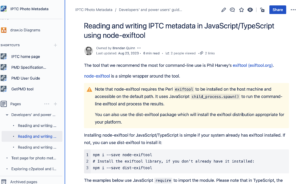
We at IPTC receive many requests for help and advice regarding editing embedded photo and video metadata, and this has only increased with the recent news about the IPTC Digital Source Type property being used to identify content created by a generative AI engine.
In response, we have created some guidance: Developers’ and power users’ guide to reading and writing IPTC Photo Metadata
This takes the form of a wiki, so that it can be easily maintained and extended with more information and examples.
In its initial form, the documentation focuses on:
- Using the ExifTool command-line tool to read and write IPTC Photo Metadata,. ExifTool is commonly used by developers and power users to explore embedded metadata;
- Reading and writing image metadata in Python using the pyexiftool module;
- Reading and writing metadata in JavaScript (or TypeScript) using the node-exiftool module.
In each guide, we advise on how to read and create DigitalSourceType metadata for generative AI images, and also how to read and write the Creator, Credit Line, Web Statement of Rights and Licensor information that is currently used by Google image search to expose copyright information alongside search results.

We hope that these guides will help to demystify image metadata and encourage more developers to include more metadata in their image editing and publishing workflows.
We will add more guidance over the coming months in more programming languages, libraries and frameworks. Of particular interest are guides to reading and writing IPTC Photo Metadata in PHP, C and Rust.
Contributions and feedback are welcome. Please contact us if you are interested in contributing.
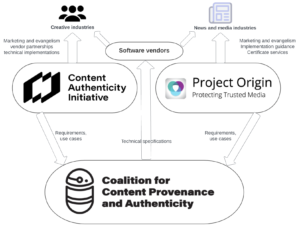
The IPTC is proud to announce that after intense work by most of its Working Groups, we have published version 1.0 of our guidelines document: Expressing Trust and Credibility Information in IPTC Standards.
The culmination of a large amount of work over the past several years across many of IPTC’s Working Groups, the document represents a guide for news providers as to how to express signals of trust known as “Trust Indicators” into their content.
Trust Indicators are ways that news organisations can signal to their readers and viewers that they should be considered as trustworthy publishers of news content. For example, one Trust Indicator is a news outlet’s corrections policy. If the news outlet provides (and follows) a clear guideline regarding when and how it updates its news content.
The IPTC guideline does not define these trust indicators: they were taken from existing work by other groups, mainly the Journalism Trust Initiative (an initiative from Reporters Sans Frontières / Reporters Without Borders) and The Trust Project (a non-profit founded by Sally Lehrman of UC Santa Cruz).
The first part of the guideline document shows how trust indicators created by these standards can be embedded into IPTC-formatted news content, using IPTC’s NewsML-G2 and ninjs standards which are both widely used for storing and distributing news content.
The second part of the IPTC guidelines document describes how cryptographically verifiable metadata can be added to media content. This metadata may express trust indicators but also more traditional metadata such as copyright, licensing, description and accessibility information. This can be achieved using the C2PA specification, which implements the requirements of the news industry via Project Origin and of the wider creative industry via the Content Authenticity Initiative. The IPTC guidelines show how both IPTC Photo Metadata and IPTC Video Metadata Hub metadata can be included in a cryptographically signed “assertion”
We expect these guidelines to evolve as trust and credibility standards and specifications change, particularly in light of recent developments in signalling content created by generative AI engines. We welcome feedback and will be happy to make changes and clarifications based on recommendations.
The IPTC sends its thanks to all IPTC Working Groups that were involved in creating the guidelines, and to all organisations who created the trust indicators and the frameworks upon which this work is based.
Feedback can be shared using the IPTC Contact Us form.
The IPTC NewsCodes Working Group has approved an addition to the Digital Source Type NewsCodes vocabulary.

The new term, “Composite with Trained Algorithmic Media“, is intended to handle situations where the “synthetic composite” term is not specific enough, for example a composite that is specifically made using an AI engine’s “inpainting” or “outpainting” operations.
The full Digital Source Type vocabulary can be accessed from https://cv.iptc.org/newscodes/digitalsourcetype. It can be downloaded in NewsML-G2 (XML), SKOS (RDF/XML, Turtle or JSON-LD) to be integrated into content management and digital asset management systems.
The new term can be used immediately with any tool or standard that supports IPTC’s Digital Source Type vocabulary, including the C2PA specification, the IPTC Photo Metadata Standard and IPTC Video Metadata Hub.
Information on the new term will soon be added to IPTC’s Guidance on using Digital Source Type in the IPTC Photo Metadata User Guide.
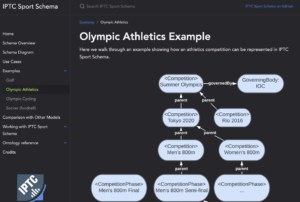
NEW YORK, NY, 26 JULY 2023: The IPTC today announced the beginning of a public feedback and review period of IPTC Sport Schema, which aims to be “the standard for the next generation of sports data.”
The announcement was made by Paul Kelly, Lead of the IPTC Sports Content Working Group, at the Sports Video Group’s Content Management Forum held at 230 Fifth Penthouse, New York.
“The SVG Content Management Forum is attended by senior tech experts from sports broadcasters and sports leagues from the US and around the world, so it is the perfect place to launch the IPTC Sport Schema,” said Kelly. “Many members of SVG have advised us on our work so far, including organisations such as Warner Bros Discovery, NBC Universal, PGA TOUR, Major League Baseball and Riot Games. Presenting our work at their event is a great way to say thanks for their help.”
While not yet an official IPTC standard, the IPTC Sports Content Working Group feels that the schema describing IPTC Sport Schema is solid enough to be published for public feedback.
Sports data for the era of linked data and knowledge graphs
The purpose of the IPTC Sport Schema project is to create a new RDF-based sports data standard, while making the most of the experience the IPTC has gained from the last 20 years of maintaining SportsML, the open XML-based sports data standard used by news and sports organisations around the world.
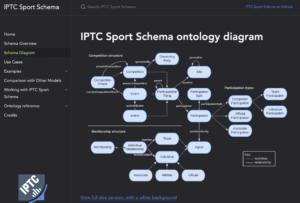
While XML served the industry well for many years, more recently developers and IPTC members have asked the Sports Content Working Group whether a standard would become available in a more modern serialisation format such as JSON, and whether knowledge graph protocols would be supported.
Because it is based on the W3C-standard RDF and OWL specifications, IPTC Sport Schema leverages the wide range of tools and expertise in the world of knowledge graphs, semantic web and linked open data, including the SPARQL query language, the JSON-LD serialisation into JSON format, inference using RDF Schema and OWL, and more.
“Using IPTC Sport Schema, sports leagues can choose to own their data,” said IPTC Managing Director Brendan Quinn. “Content publishers or sports leagues can publish open data on their website if they choose, in a way that can be re-mixed and re-used by others around the world.” IPTC Sport Schema can also be used for a more traditional model of aggregation and syndication by sports statistics providers who add value to the raw data being collected by sports leagues.
Like its ancestor SportsML, IPTC Sport Schema is created as a generic sports data model that can represent results, statistics, schedules and rosters across many sports. “Plugins” for specific sports extend the generic schema with specific statistics elements for 10 sports such as soccer, motor racing, tennis, rugby and esports. But the generic model can be used to handle any competitive sports competition, either team-based, head-to-head or individual.
As well as IPTC’s SportsML standard, the project is based on previous work by the BBC on its BBC Sport Ontology (some of its creators worked on this project). We have also consulted with and analysed related projects and formats such as OpenTrack and the IOC’s Olympics Data Feed format.
For more information on IPTC Sport Schema, please see the dedicated site sportschema.org, the project’s GitHub repository,
Those who are interested in the details can see an introduction to the IPTC Sport Schema ontology design, the full ontology diagram or full RDF/OWL ontology documentation,
There may be significant changes to the schema between now and when it is released as a fully endorsed IPTC Standard, so we don’t recommend that it is implemented in production systems yet. But we welcome analysis and experimentation with the model, and look forward to seeing feedback from those who would like to implement it in the real world.
People and organisations who are not IPTC members can give feedback by posting to the IPTC SportsML public discussion group or use the IPTC Contact Us form.
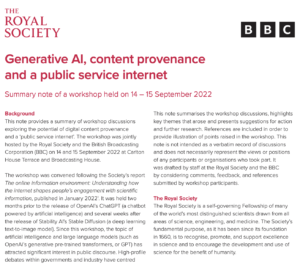
In September 2022, IPTC Managing Director Brendan Quinn was invited to attend a workshop at the Royal Society in London, held in conjunction with the BBC. It was convened to discuss concerns about content provenance, threats to society due to misinformation and disinformation, and the idea of a “public-service internet.”
A note summarising the outcomes of the meeting has now been published. The Royal Society says, “This note provides a summary of workshop discussions exploring the potential of digital content provenance and a ‘public service internet’.”
The workshop note gives a summary of key takeaways from the event:
- Digital content provenance is an imperfect and limited – yet still critically important – solution to the challenge of AI-generated misinformation.
- A provenance-establishing system that can account for the international and culturally diverse nature of misinformation is essential for its efficacy.
- Digital content provenance tools present significant technical and ethical challenges, including risks related
to privacy, security and literacy. - Understanding how best to embed ideas such as digital content provenance into counter-misinformation strategies may require revisiting the rules which dictate how information is transmitted over the internet.
- A ‘public service internet’ presents an interesting and new angle through which public service objectives can shape the information environment; however, the end state of such a system requires greater clarity and should include a wide range of voices, including historically excluded groups.
The IPTC is already participating in several projects looking at concrete responses to the problems of misinformation and disinformation in the media, via our work theme on Trust and Credibility in the Media. We are on the Steering Committee of Project Origin, and work closely with C2PA and the Content Authenticity Initiative.
The IPTC looks forward to further work in this area.The IPTC and its members will be happy to contribute to more workshops and studies by the Royal Society and other groups.

The IPTC Standards Committee is happy to announce that ninjs, IPTC’s schema for marking up news content in JSON, has been revised to versions 2.1 and 1.5.
The vote to approve the new versions was taken at the recent IPTC Spring Meeting in Tallinn, Estonia and online.
This is in keeping with IPTC’s decision to maintain two parallel versions of ninjs: one for those who can’t upgrade to the 2.x version of backwards compatibility reasons, and those who prefer the simpler structure of ninjs 2.x that is easier to handle in some tools.
The ninjs User Guide has been updated to reflect the changes, which are summarised below.
ContactInfo added to ninjs 1.5 and 2.1
ninjs 2.1 and ninjs 1.5 both include the new contactinfo structure which can be used in the people, organisations, places and infosources properties (and their ninjs 1.x equivalents person, organisation, place and infosource).
The contactInfo structure can contain physical or online contact information such as a street address or postal address, a username on social media such as Twitter, Instagram or TikTok, or even a locator such as what3words.
Here are some examples of how the contactinfo property can be used:
"people": [
{
"name": "Jonas Svensson",
"contactinfo": [
{
"type":"phone",
"role": "work",
"value": "+46 (0)8-7887500"
}
]
}
],
"organisations": [
{
"name": "International Committee of the Red Cross",
"contactinfo": [
{
"type": "web",
"value": "https://www.icrc.org/"
},
{
"type": "address",
"address": {
"lines": [
"19 Avenue de la paix",
"1202 Geneva",
"Switzerland"
]
}
},
{
"type": "telephone",
"value": "+41 22 734 60 01"
}
]
}
]
Better support for organisation identifiers such as tickers, ISIN etc
ninjs 2.1 and 1.5 also include the new symboltype and symbol properties under symbols. Symbol can identify any type of URI describing the type of the symbol. The CV http://cv.iptc.org/newscodes/financialinstrumentsymboltype is recommended.
The ticker sub-property under symbols is now deprecated. This means that it can still be used if necessary, but use is not recommended.
We now recommend that ticker symbols are stored using symbol="TCKR" and symboltype="https://cv.iptc.org/newscodes/financialinstrumentsymboltype/Ticker".
Better support for machine classification
The subjects (ninjs 2.x) / subject (ninjs 1.x) properties now allow for the sub-properties creator, relevance and confidence.
This allows organisations to more accurately use machine-generated subject tags in their content. while stating that it was created by a machine (using the creator property), and giving numerical values for the relevance and confidence scores that are reported by machine tagging engines. (Of course, these properties can also be used for human-created subject tags if necessary!)
In addition, some internal changes to the schema were made to fix a validation bug that existed in previous versions. In order to accommodate these changes, the ninjs 2.1 schema uses the https://json-schema.org/draft/2020-12/schema version of JSON Schema.
Thanks to Johan Lindgren, welcome Ian Young as Working Group Lead
At the Spring Meeting in Tallinn we said farewell to Johan Lindgren as Lead of the News in JSON Working Group.
Johan, of the TT news agency in Sweden, was instrumental in bringing the News in JSON Working Group back from its quiet period after the initial launch of ninjs. This directly led to the release of several new versions of ninjs over the past few years, and its adoption by many of the world’s top news providers.
The IPTC wishes to thank Johan for all his contributions, and wishes him well for his retirement.
Johan’s work will be taken over by Ian Young from PA Media Group / Alamy based in the UK. Ian steps up to the Lead role after participating in the Working Group for many years, since the earliest days of ninjs.
We thank Ian for being willing to take on the lead role, and we look forward to seeing what developments will emerge from the News in JSON Working Group in the future.
In partnership with the IPTC, the PLUS Coalition has published for public comment a draft on proposed revisions to the PLUS License Data Format standard. The changes cover a proposed standard for expressing image data mining permissions, constraints and prohibitions. This includes declaring in image files whether an image can be used as part of a training data set used to train a generative AI model.
Review the draft revisions in this read-only Google doc, which includes a link to a form for leaving comments.
Here is a summary of the new property:
| XMP Property | plus:DataMining |
| XMP Value Type | URL |
| XMP Category | External |
| Namespace URI | http://ns.useplus.org/ldf/xmp/1.0/DataMining |
| Comments |
|
| Cardinality | 0..1 |
According to the PLUS proposal, the value of the property would be a value from the following controlled vocabulary:
| CV Term URI | Description |
| http://ns.useplus.org/ldf/vocab/DMI-UNSPECIFIED | Neither allowed nor prohibited |
| http://ns.useplus.org/ldf/vocab/DMI-ALLOWED | Allowed |
| http://ns.useplus.org/ldf/vocab/DMI-ALLOWED-noaitraining | Allowed except for AI/ML training |
| http://ns.useplus.org/ldf/vocab/DMI-ALLOWED-noaigentraining | Allowed except for AI/ML generative training |
| http://ns.useplus.org/ldf/vocab/DMI-PROHIBITED | Prohibited |
| http://ns.useplus.org/ldf/vocab/DMI-SEE-constraint | Allowed with constraints expressed in Other Constraints property |
| http://ns.useplus.org/ldf/vocab/DMI-SEE-embeddedrightsexpr | Allowed with constraints expressed in IPTC Embedded Encoded Rights Expression property |
|
Allowed with constraints expressed in IPTC Linked Encoded Rights Expression property |
The public comment period will close on July 20, 2023.
If it is accepted by the PLUS membership and published as a PLUS property, the IPTC Photo Metadata Working Group plans to adopt this new property into a new version of the IPTC Photo Metadata Standard at the IPTC Autumn Meeting in October 2023.
The IPTC is happy to announce that NewsML-G2 version 2.32 has been released.
All documentation relating to version 2.32 can be found at the NewsML-G2 2.32 documentation page.
The changes in 2.32 are:
- Added new attributes
authoritystatusandauthoritystatusurito the scheme, schemeMeta and catalog elements. These attributes describe the status of the authority managing a resource such as a scheme or a catalog. - Added a new NewsCodes vocabulary https://cv.iptc.org/newscodes/authoritystatus with the values “No current authority”, “No single authority” and “Country-specific authority”.
- Updated the IPTC catalog to version 38, including the new authoritystatus vocabulary and also added a “cvx.iptc.org” vocabulary, ticker. Added an
authoritystatusattribute to the following schemes: isin, a1312cat, a1312prio, a1312svc, a1312vers. Also update to note on the frmt vocabulary removing the part that says it is only applicable to NewsML 1. - Update schema documentation for qcode, uri and literal throughout to be more accurate.
- Remove https from CV references in schema documentation
- Update dev schema to use 2.32.
- The schema documentation for “creator” and “creatoruri” attributes is now correct and consistent across all instances.
All information related to NewsML-G2 2.32 is at https://iptc.org/std/NewsML-G2/2.32/.
Example instance documents are at https://iptc.org/std/NewsML-G2/2.32/examples/.
Full XML Schema documentation is located at https://iptc.org/std/NewsML-G2/2.32/specification/XML-Schema-Doc-Power/
The NewsML-G2 Generator tool has also been updated to produce NewsML-G2 2.32 files using the version 38 catalog.
For any questions or comments, please contact us via the IPTC Contact Us form or post to the iptc-newsml-g2@groups.io mailing list. IPTC members can ask questions at the weekly IPTC News Architecture Working Group meetings.
Categories
Archives
- December 2025
- November 2025
- October 2025
- September 2025
- August 2025
- July 2025
- June 2025
- May 2025
- April 2025
- March 2025
- February 2025
- January 2025
- December 2024
- November 2024
- October 2024
- September 2024
- August 2024
- July 2024
- June 2024
- May 2024
- April 2024
- March 2024
- February 2024
- December 2023
- November 2023
- October 2023
- September 2023
- August 2023
- July 2023
- June 2023
- May 2023
- March 2023
- February 2023
- January 2023
- December 2022
- November 2022
- October 2022
- September 2022
- August 2022
- July 2022
- June 2022
- May 2022
- April 2022
- March 2022
- February 2022
- January 2022
- December 2021
- November 2021
- October 2021
- September 2021
- August 2021
- July 2021
- June 2021
- May 2021
- April 2021
- February 2021
- December 2020
- November 2020
- October 2020
- September 2020
- August 2020
- July 2020
- June 2020
- May 2020
- April 2020
- March 2020
- February 2020
- December 2019
- November 2019
- October 2019
- September 2019
- July 2019
- June 2019
- May 2019
- April 2019
- February 2019
- November 2018
- October 2018
- September 2018
- August 2018
- July 2018
- June 2018
- May 2018
- April 2018
- March 2018
- January 2018
- November 2017
- October 2017
- September 2017
- August 2017
- June 2017
- May 2017
- April 2017
- December 2016
- November 2016
- October 2016
- September 2016
- August 2016
- July 2016
- June 2016
- May 2016
- April 2016
- February 2016
- January 2016
- December 2015
- November 2015
- October 2015
- September 2015
- June 2015
- April 2015
- March 2015
- February 2015
- November 2014